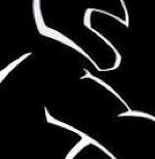The “bobber” is the lesser-known cousin of the very popular “chopper” motorcycle. While the chopper has garnered the majority of the attention as far as popular culture is concerned, the bobber motorcycle has carved out a sizeable niche and cult following for itself. Bobber fans are just as diehard as chopper owners and aficionados, and the bobber is arguably a more pure motorcycle.
Bobbers are the epitome of utilitarianism and are stripped nearly bare to increase speed and cut down on drag. It is very uncommon to find a true bobber with anything except for the barest, most essential parts. Bobbers can be inexpensive especially when compared to other motorcycles, and often they are amalgams or hybrids of other bikes.
When bobbers were first created, the intent was not to create a new type of motorcycle or sub-genre, the idea was to keep motorcycles on the road for as cheaply as possible. As the story goes, soldiers who gained experience and knowledge about motors came back to the United States and brought their knowledge with them. During the ’40s and ’50s, motorcycles had become very popular and the returning soldiers used their knowledge and applied it to motorcycles, creating some unique and customized bikes. During WW2, light and streamlined bikes were kings of the road in the European theater, and American soldiers sought to bring that little edge in speed back home. Sacrificing any extra items such as chrome and bulky lights and seats soon turned into shaving off weight wherever possible. If a bike had a breaking system that was too heavy or big, owners would import or find parts from a European model or smaller bike and put it to use on his. Fenders and lights, and sometimes mirrors were removed as well.
Once the bobber was as clean and clutter free as they could be, the focus shifted to other modifications. Earlier on, simply removing the fenders was enough to make a bike unique, but as time passed and more and more was taken from the original bike, bobber owners sought other ways to alter their bikes. Soon, owners starting raking in the front ends and fat back tires were brought into the fold. The legendary Harley Davidson was said to be heavily influenced by the styles and functions of the bobbers in the ’40s and ’50s and their surge in popularity during this era and in later eras can be partially attributed to their ability to take advantage of the bobber’s popularity.
By the time the Vietnam war was over, more soldiers with new ideas came home and the idea of the bobber was altered and became known as the chopper. The chopper was still aimed at being economical and no frills, but now the frames were starting to be altered and sometimes were custom made. High handlebars and narrow wheels with saddlebags and a few adornments quickly created a new form of the bobber; the chopper. There are now different forms of the bobber known as the “bobber-chopper” or the “retro-bobber” and they have become increasingly popular in the past 10 years. Though only a bobber in name, newer bobbers are more about independence and customization than simply being constructed cheaply. There are even clubs for the different types of bobbers and some bike makers are making custom bobbers to appeal to rabid bobber lovers.
About the author: Richard McAdams writes about online education, sports, and anything else that interests him. During his free time he enjoys working with cars and surfing the net.







